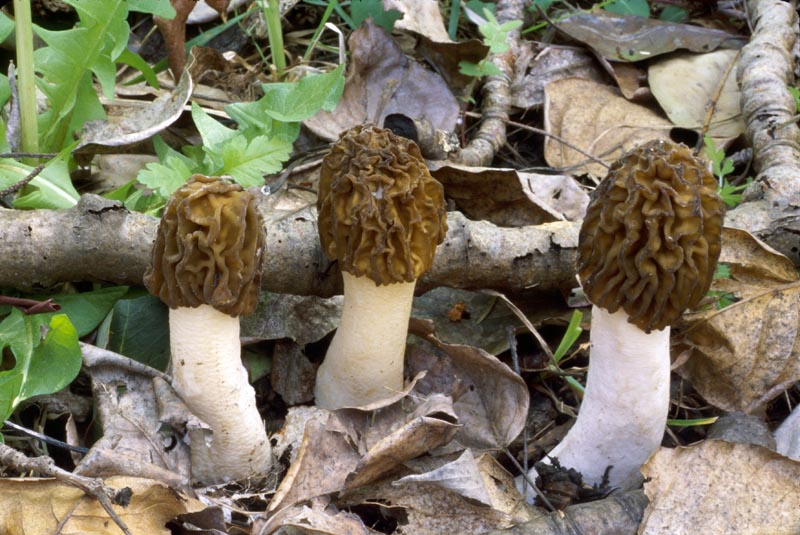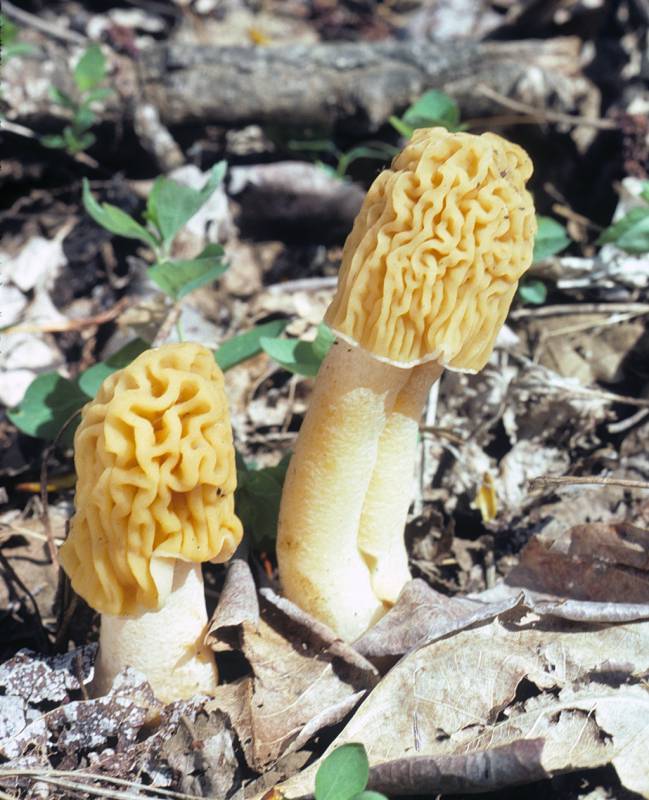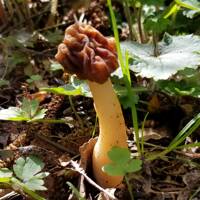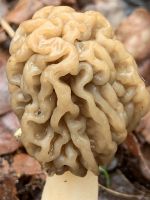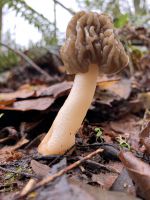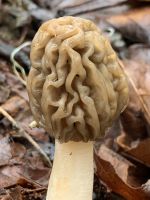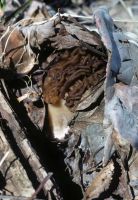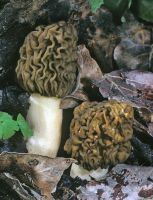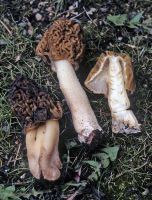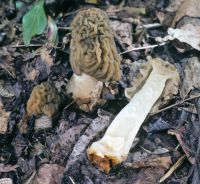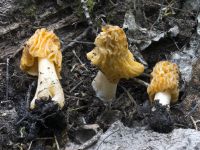Origin: Native
Conservation Status: Not of concern
Edibility: This false morel is collected and eaten by many people and some even prefer it to true morels. It seems to cause digestive upset in a greater proportion of people than morels do, so use caution and sample them in small amounts until you ascertain your tolerance.
This false morel is collected and eaten by many people and some even prefer it to true morels. It seems to cause digestive upset in a greater proportion of people than morels do, so use caution and sample them in small amounts until you ascertain your tolerance.
Verpas are similar in appearance to morels but the cap is attached only at the apex of the stipe so that the sides of the cap hang freely like a lampshade. Verpa bohemica is characterized by its brown, bell-shaped, strongly wrinkled, cap and whitish stipe. It occurs early in spring, usually a week or two before morels begin to fruit. It can be found in a number of wooded habitats, but especially along rivers and streams under cottonwoods. If the attachment of the cap is noted, the only morel that it could be confused with is Morchella semilibera, in which the cap is free from the stipe for about half of its height. However, the distinctly ridged and pitted morel cap is very different from the wrinkled cap of V. bohemica.
PNW Herbaria: Specimen records of Verpa bohemica in the Consortium of Pacific Northwest Herbaria database
CalPhotos: Verpa bohemica photos

